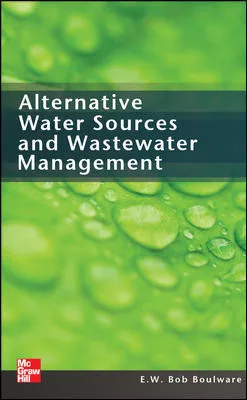Bottled Water Taking More Punches
Bottled water is being banned in several communities in the United States, most notably San Francisco, while other cities are considering the ban. And all this amid reports that Aquafina, Pepsi Co.’s bottled water line, will acknowledge on its labels that it is made from tap water.
In late-June, San Francisco Mayor Gavin Newsom signed an executive order stating that the San Francisco city government will no longer be allowed to use city funds to buy bottled water for its employees. This includes city departments, city consessions, city-funded events and functions in city buildings.
“All of this waste and pollution is generated by a product that by objective standards is often inferior to the quality of San Francisco’s pristine tap water,” he wrote in the executive order, effective July 1.
By Dec. 1, all city departments located on city property must switch from bottled water dispensers to dispensers that attach to taps or water pipes and use water from the Hetch Hetchy Reservoir in Yosemite National Park.
The city spends almost half a million dollars a year on bottled water, despite owning a reservoir that is said to produce some of the country’s best-tasting tap water, reports the San Francisco Chronicle. A 2006 story noted that the city spends more than $2 million on water, paper cups and dispenser rentals each year.
This ban comes after a similar ban in Santa Barbara, Calif., in April. Santa Barbara’s ban states that no more bottled water will be purchased for city meetings or events; instead, iced tap water will be served out of carafes and poured into biodegradable cups and “glasses,” notes the Santa Barbara Independent.
Ann Arbor, Mich., home of the Big 10’s University of Michigan, has also banned bottled water. The city council recently passed a resolution barring city vendors from selling commercial bottled water at city events, says the Ann Arbor News. The city will start selling reusable water bottles that can be filled with tap water from home, from drinking fountains, etc.
But in Michigan, the concern is also about the Great Lakes (the state borders four of them - Michigan, Superior, Huron and Erie). Large-scale bottlers have been taking water from the lakes and packaging them to sell at inflated prices. But much of the state’s economy is dependent, in part, on the supply of water from the lakes for industry or tourism.
While not an all-out ban, Salt Lake City Mayor Rocky Anderson last December asked the city staff of 400 to stop buying and drinking bottled water for public meetings and office events.
And an alderman in Chicago recently proposed a 10- to 25-cent bottled water tax to help the environment - and the city budget.
Restaurants, Too
Some in the restaurant industry are also making the move to ban bottled water. Alice Waters, at her Berkeley, Calif., Chez Panisse restaurant, banned bottled still water last year and started serving only house-made sparkling water this year, says the New York Times. Now other restaurants are following suit - Nopa and Incanto (San Francisco), Poggio (Sausalito, Calif.), Del Posto and Birdbath Neighborhood Green Bakery (New York), and Farmer’s Diner (Quechee, Vt.).But
most restaurateurs aren’t ready to go cold turkey, the Times says; some have switched
to local bottled water instead of imported, or only serve bottled water on
request. There’s also a big profit in bottled water; restaurants buy it for
$1-2 and sell it for as much as $8 - giving it the highest markup of any item
in the menu.
What's It All Mean?
The New York Times ran an editorial Aug. 1 titled “In Praise of Tap Water.” While it talked about the cost of bottled water to the consumer as well as to the environment, there is one paragraph that stood out among the rest:“Tap water may now be the equal of bottled water, but that could change. The more the wealthy opt out of drinking tap water, the less political support there will be for investing in maintaining America’s public water supply. That would be a serious loss. Access to cheap, clean water is basic to the nation’s health.”
This country has some of the best public water in the world. If people stop drinking tap water, what happens to public water infrastructure? Will there be money available to replace old pipes leaching lead? Or crews to inspect water lines that might rupture?
Now is the time to educate your customers on their water. Plumbers are the water experts, right? Test customers' tap water; if there is a water-quality issue, recommend a course of action on how to make their tap water much more pleasant to drink.

Another Alternative To Bottled Water
Instead of throwing that bottle of water away when it’s empty, how about filling it up with tap water? Manufacturers of drinking fountains and water coolers are now adding “glass filler” options for consumers to fill up water bottles with cool tap water, thus reducing waste in landfills and saving consumers money:
Links
Looking for a reprint of this article?
From high-res PDFs to custom plaques, order your copy today!





